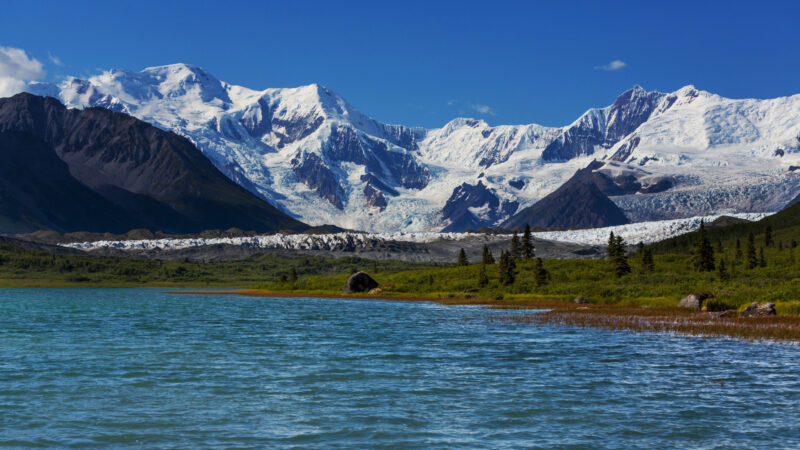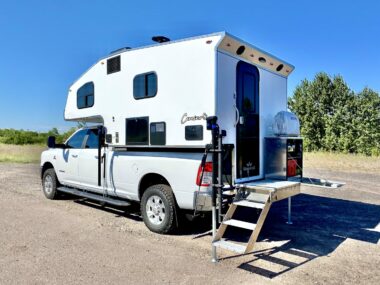Table of Contents Show
If you’ve ever been to Yellowstone, you know how incredibly vast it seems. Would you believe that the largest national park in the U.S. is almost six times that size?
It’s in Alaska, which, believe it or not, is home to seven of our 10 biggest national parks. This huge expanse has free-ranging bison, caribou, and Dall sheep amidst glaciers, snow-capped mountains, and volcanoes. It’s been a national park for just a few decades and has a hyphenated name that doesn’t exactly roll off the tongue.
Let’s find out more about this wild, scenic, and gigantic place.
What Is the Largest National Park in the US?
This is a frequently asked question for park rangers, and the answer may surprise you. Alaska has nine national parks – more than any other state – and almost all of them are among our very largest. The biggest one of all is Wrangell-St. Elias National Park, in Alaska’s southeastern corner.
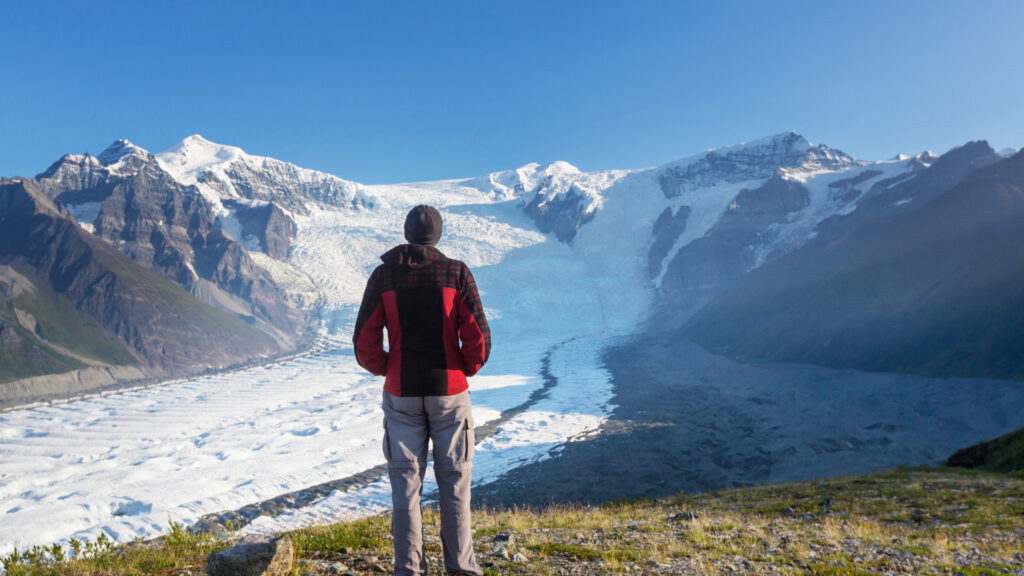
About Wrangel-St. Elias National Park
Wrangell-St. Elias covers an astounding 13,157,901 acres. How big is that? It’s over 20,000 square miles or about half the size of Kentucky. The National Park Service (NPS) describes it as the same size as Yellowstone, Yosemite, and Switzerland combined.
Established in 1980, it’s one of our newer parks. It’s named after two different mountain ranges, the Wrangell Mountains and the St. Elias Mountains. In fact, many of the highest summits in North America are inside this park.
The 18,008-foot Mount St. Elias is the second-tallest in the United States (behind Alaska’s Denali). The 14,163-foot Mount Wrangell is one of the largest active volcanoes in North America.
Besides being the largest national park in the U.S, it’s also the largest wilderness area. It’s extremely remote with just a couple of roads and very few services.
Pro Tip: Are curious about how many National Parks there are in the US? Click here to decode the National Park system!
Where is Wrangell-St. Elias National Park?
When you look at a map of Alaska, scan toward the bottom, right corner of the state above its Panhandle. This is where you’ll find Wrangell-St. Elias, north of the Gulf of Alaska and west of Canada’s Yukon Territory. It’s to the northwest of Glacier Bay National Park and southeast of Denali National Park. The city of Anchorage is about 200 miles to the west.
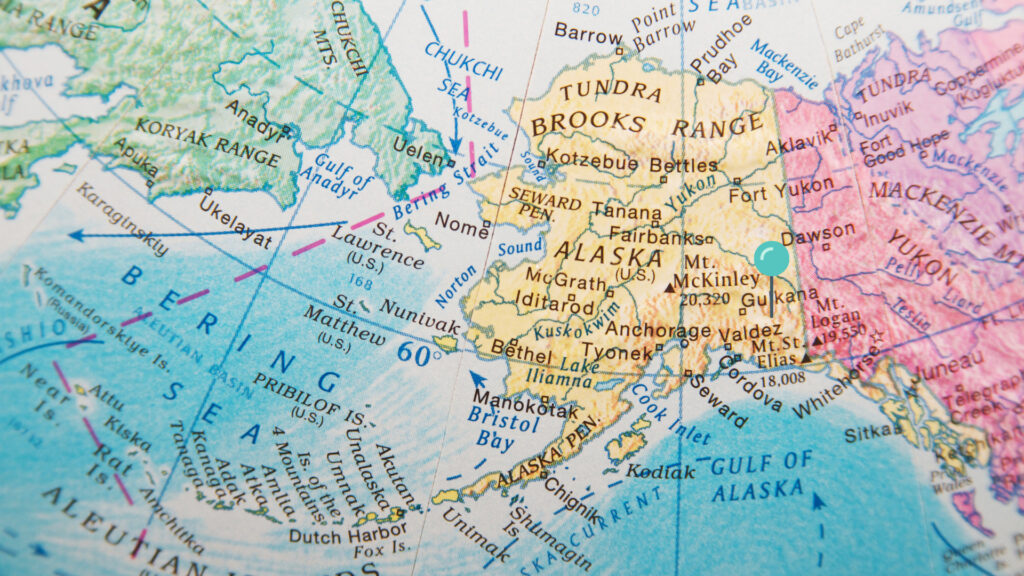
Why Was Wrangell-St. Elias Made Into A National Park?
Realizing the importance of saving such irreplaceable areas, Congress passed the Alaska National Interest Lands Conservation Act in 1980. It turned about 104 million acres in Alaska into public lands, protecting them from development.
This preservation effort was designed to maintain unique natural resources and beauty, protect wildlife and habitats, and provide recreation opportunities. Something that may have influenced Congress’ decision is the extensive copper mining in the early 1900s.
How Much Does It Cost to Get In to Wrangell-St. Elias National Park?
Some national parks charge an entrance fee, and some don’t. The largest national park in the U.S. happens to be the ones with free admission. You won’t need any kind of pass to enter Wrangell-St. Elias National Park.
When Is the Best Time to Visit Wrangell-St. Elias?
This is a place where the mountains have snow year-round, so of course, it gets cold. Summer is the time to visit, but it’s a pretty small window. Winter weather typically lingers for around five months. It finally warms up in June and July, with highs in the 70s and low 80s.
When planning your visit, shoot for early summer because there’s rain toward August and snowfall by September.
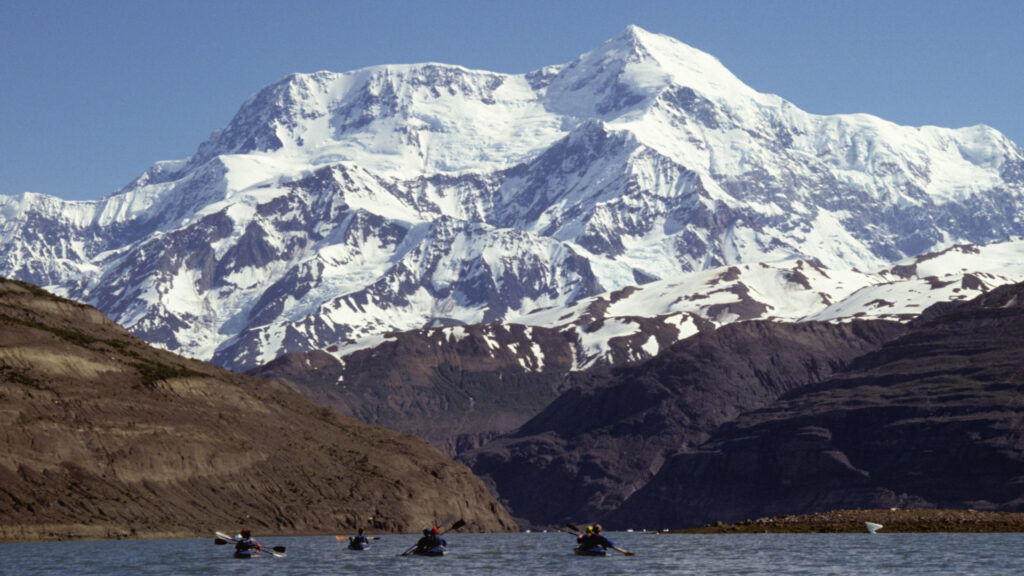
Why You Should Visit the Largest National Park in the US
What’s so special about this place? Lots of things. Here’s a taste of what you can see and do at Wrangell-St. Elias National Park. Be aware that this is challenging territory that requires some serious know-how and an adventurous spirit.
1. Miles of Untouched Land
As we mentioned, part of this area was busy with copper mining back in the day. The NPS says more than $200 million in copper came from Kennecott from 1911 to 1930. That place is a historic landmark now, but it’s an exception.
Most of this national park can best be described as backcountry. For the most part, it’s still in its natural state, so visiting here is like exploring a wild frontier.
2. Take Photos of Incredible Wildlife
From the rainforest to tundra, the wide-ranging terrain means an amazingly diverse wildlife.
According to the NPS, the park is home to the highest concentration of Dall sheep in North America – some 13,000 sheep, in fact.
There are mountain goats and caribou, too. The marine animals you might see include sea lions, harbor seals, porpoises, and whales.
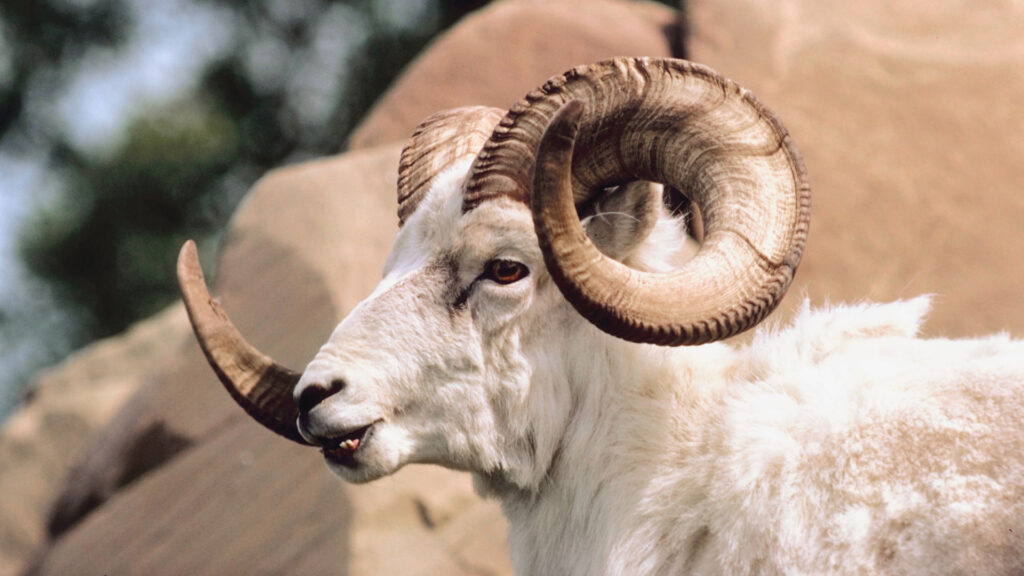
3. See the Night Sky Without Light Pollution
With such high elevation and almost zero light pollution, this area is sometimes great for stargazing. The keyword is “sometimes,” though.
Unfortunately, it’s not when the weather is best. Because it’s so far from the equator, parts of Alaska have almost around-the-clock daylight at the height of the summer. But, on those nights when the skies are dark, they’re dramatic.
Time your visit right and you may even see the Northern Lights.
4. Climb Barely-Touched Rock Formations
We don’t expect you to scale the 18,008-foot Mount St. Elias, but there may be others within your reach. There are almost endless possibilities here for rock climbing and mountaineering.
Depending on your skill level, you want to seek expert help. If you want to go that route, numerous outfitters offer their services as guides.

5. Have a Unique Backpacking Experience
There are a few established trails in the park, but striking out into the unknown may be a more rewarding experience. It’s a risky endeavor, though, and only for those with survival skills.
Natural conditions change constantly, so even the latest maps and guidebooks may be outdated. You’ll need GPS, but don’t follow it blindly. Be sure to have a compass as a backup.
Pro Tip: If you are planning a trip to Alaska, be sure to visit the Tongass National Forest for a unique experience!
What Is the Largest National Park in the Lower 48 States?
The continental United States has massive undeveloped areas, too, but they may seem miniature compared to Alaska’s national parks. The largest one outside Alaska is Death Valley National Park, mostly in California but stretching into Nevada.
It covers 3.4 million acres, which is tremendously immense but only about a quarter of the size of Wrangell-St. Elias.
Should You Make the Trip to the Largest National Park in the US?
Visiting the largest national park in the U.S. may seem intimidating, but don’t think you have to see every square inch. That would be impossible, right? But it’s not overly ambitious to see the unspoiled country like no other.
All you have to do is make the trek to southeastern Alaska and Wrangell-St. Elias National Park. This area’s not entirely remote and desolate, so you won’t be completely on your own in the wilderness.
There are visitor centers, ranger stations, scenic trails, and historic sites to tour. You can also book guided tours or take a sightseeing flight over this unbelievably vast and gorgeous area. Who knows? You might even be there for a front-row seat to see Mount Wrangell erupt for the first time since 1900.
Would you like to visit Wrangell-St. Elias?




